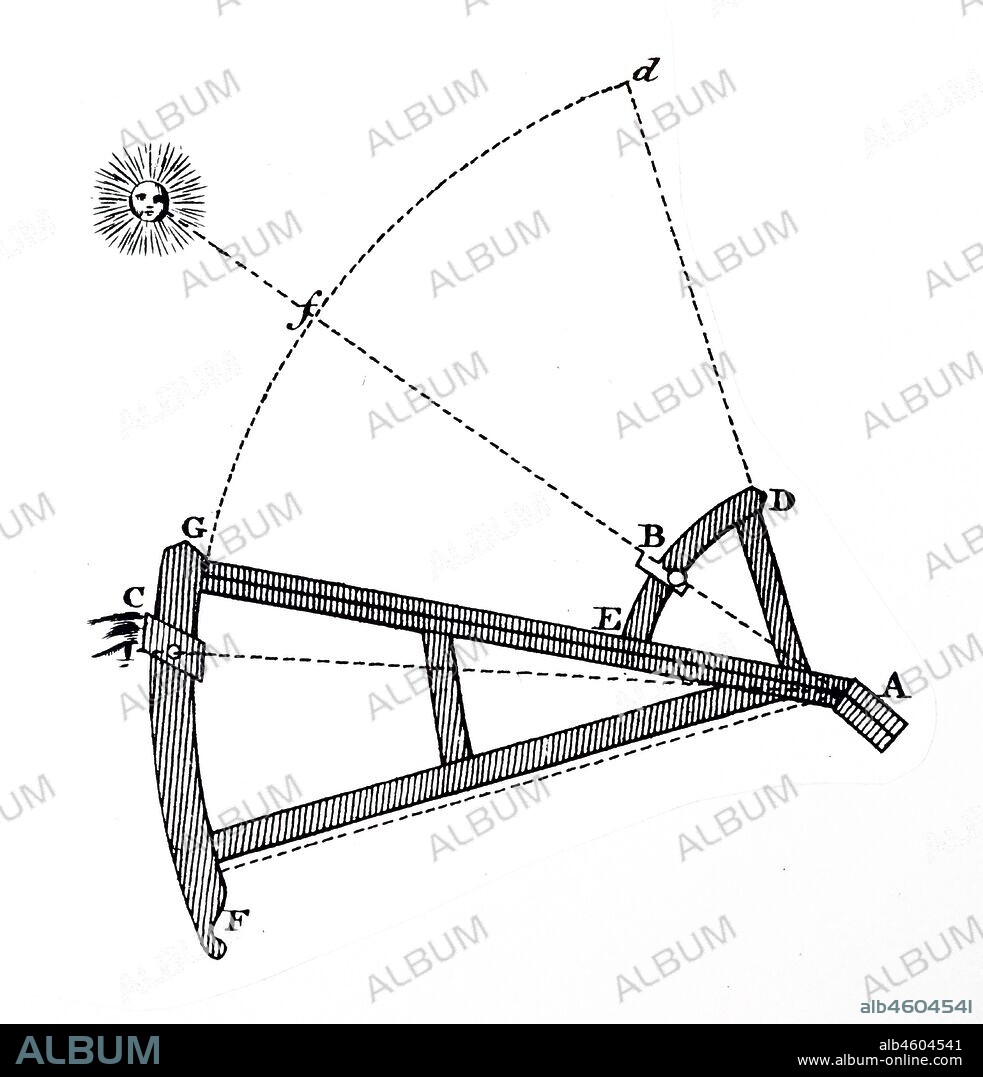alb4604541
18th century illustration showing a backstaff or English quadrant. 1776. The backstaff is a navigational instrument that was used to measure the altitude of a celestial body, in particular the sun or moon. When observing the sun, users kept the sun to their back (hence the name) and saw the shadow cast by the upper vane on a horizon vane. It was invented by the English navigator John Davis who described it in his book Seaman's Secrets in 1594

|
Añadir a otro lightbox |
|
Añadir a otro lightbox |



¿Ya tienes cuenta? Iniciar sesión
¿No tienes cuenta? Regístrate
Compra esta imagen.
Selecciona el uso:

Descripción:
Ver traducción automática
18th century illustration showing a backstaff or English quadrant. 1776. The backstaff is a navigational instrument that was used to measure the altitude of a celestial body, in particular the sun or moon. When observing the sun, users kept the sun to their back (hence the name) and saw the shadow cast by the upper vane on a horizon vane. It was invented by the English navigator John Davis who described it in his book Seaman's Secrets in 1594
Crédito:
Album / Universal Images Group / Universal History Archive
Autorizaciones:
Modelo: No - Propiedad: No
¿Preguntas relacionadas con los derechos?
¿Preguntas relacionadas con los derechos?
Tamaño imagen:
4488 x 4673 px | 60.0 MB
Tamaño impresión:
38.0 x 39.6 cm | 15.0 x 15.6 in (300 dpi)
Palabras clave:
1776 • BRITANICO • BRITANICOS • CUERPO CELESTE • ILUSTRACION • INGLES • INGLESA • INGLESES • INSTRUMENT • INSTRUMENTO • INVENCION • JOHN DAVIS • LIBRO • LIBROS • LUNA • MEDIDA • NAVEGACION • NAVEGANTE • PARTICULAR • S. XVIII • SIGLO XVIII • SOL • SOMBRA • TRIPULANTE • VELETA
 Pinterest
Pinterest Twitter
Twitter Facebook
Facebook Copiar enlace
Copiar enlace Email
Email
